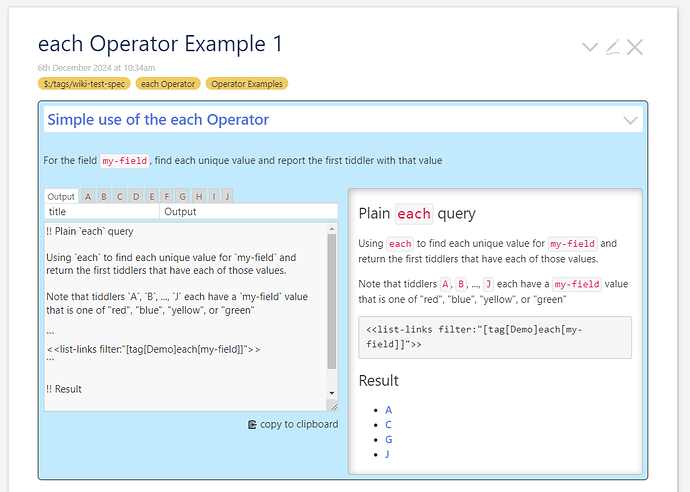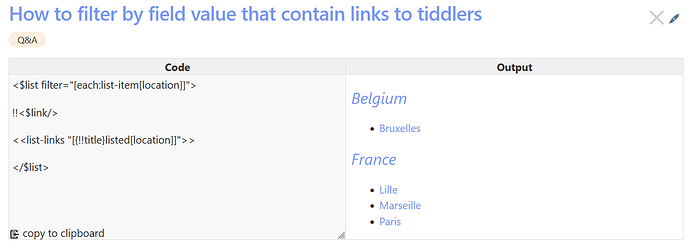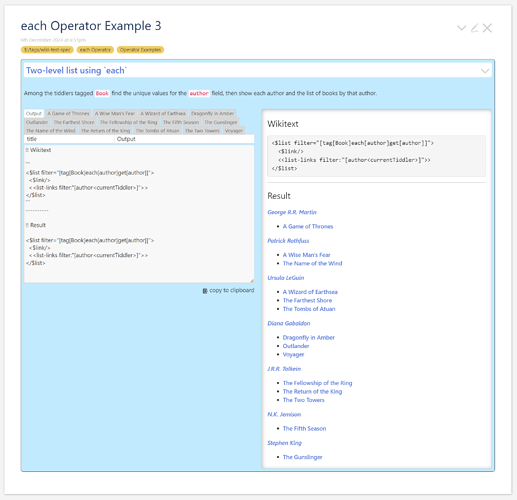@pmario Thanks for the diligence. It’ very much appreciated. 
Having spent some time digging into the links you provided (thank you!), here’s my take on what I’ve seen. And this I think speaks to the issues that confound readers of the documentation:
The core source documentation, and the user documentation (for each[] in this case) bring about a problem often seen when terms are not clearly defined. It seems that the root cause is the core source documentation, whereby its notion of what things are called and what things are, are not set out clearly. In the case of each[], that same issue seems to have been copied across to the user documentation.
Here are the terms that seem to be sometimes synonyms, and sometimes not:
tiddler → title → value
tiddler is an object with properties { <data> }
title is a string "my title"
value is whatever you say it is in the coding context you are working. It could be a tiddler, or a title, or an array element/member of a list (a list whose properties are unknown outside of the core code’s context). It really could be anything with any possible JavaScript type.
Sadly, value is transplanted from the core source documentation into the user documentation as though the context where it made sense would come right along with it. Bang. Without it, users have no clue (other than guessing) what value truly refers to.
Muddling up tiddler and title happens across user documentation on tw .com. Old-timers like you and I can generally mush them together and deduce what is actually meant. In most cases, we do it without thinking about it. But that’s not what happens in a newbie’s head – which is unfortunate, to say the least
And if this point is lost on anyone, consider any “list of tiddlers” you might think you have in your wikitext/code – it is in actual fact a “list of (tiddler) titles”.
Aside: Where “group” came from, I have no idea. I still don’t get what it means, what the author’s intention was, what it’s referring to or… anything. 
Yes, I know PRs for docs are always welcome. But if i don’t understand it, I can’t offer any help.
^Z




